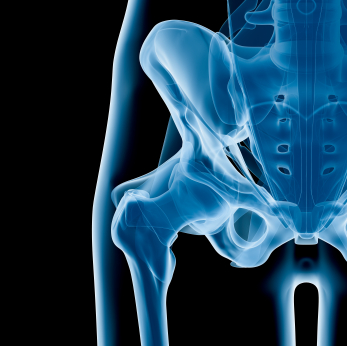Hip Pain and Impingement
Many patients present to our clinic with hip pain. In the past, muscle strain or osteoarthritis may have been on the top of the diagnostic likelihood, but this is changing as our knowledge of the hip is improving. One condition that we have a relatively new understanding about is femoroacetabular impingement.
Hip Impingement
More and more literature is being published on femoroacetabular impingement syndrome. Since we are still learning about it, we really don’t know how common it is. We do know that it is painful and is a cause of early degenerative arthritis in young adults. The pathomechanics of the condition is relatively simple since the name almost says it all; the femur abuts against the cartilage in the hip “socket” (acetabulum) and causes an impingement of the tissue. This usually occurs when the hip is placed at the end of its movement range. For those people at risk, the repeated movement in this manner damages the cartilage, causing advanced degeneration of the cartilage and potential tearing of the labrum. (The labrum is a round, bowl like structure of cartilage that the femoral head sits in).
Symptoms of Hip Impingement
Symptoms of femoroacetabular impingement include hip pain (in the groin area or on the lateral aspect of the hip) and stiffness, usually after prolonged sitting or prolonged activity. Progressive degeneration of the cartilage occurs with repeated aggravating activity; this increases the pain. When there is tearing of the labrum, patients may report catching or locking sensations.
Treatment for Hip Pain
The treatment for femoroacetabular impingement is variable. As with most musculoskeletal conditions, conservative treatment is a good starting point. If there is a certain activity that aggravates your hip it would be advisable to stop doing it for a while. Your family doctor may be able to offer you temporary medication to help control your pain and inflammation. Corticosteroid can also be considered as an option for temporary relief. From the perspective of physiotherapy or chiropractic, treatment geared at the tight muscles of the hip may be helpful. Therapeutic modalities like interferential current and low intensity laser may also be helpful for reducing pain and inflammation, and the regeneration of healthier cells in the area of the joint (as in the case of low intensity laser).
Surgery for Hip Impingement
Keep in mind that conservative treatment does not alter the structural changes occurring in the hip joint itself. To address these changes, referral to an orthopedic surgeon who is knowledgeable about this relatively new condition is paramount. Early, effective treatment can help reduce the progression of femoroacetabular impingement and preserve the joint structures for the future.
Diagnosing Hip Impingement
According to the literature, there are some subtle radiographic signs that can help determine whether femoroacetabular impingement is present. Our Chiropractors are able to assist you with this. We can refer you for the appropriate imaging and perform the appropriate clinical tests to see if this may be the cause of your persistent hip pain.
For further information about treatment for this condition at our Burlington clinic, feel free to email us at [email protected]
References
Emary P. Femoroacetabular impingement syndrome: a narrative review for the chiropractor. Journal of the Canadian Chiropractic Association 2010; 54(3): 164-175.
Martin RL et al. Acetabular labral tears of the hip: examination and diagnostic challenges. Journal of Orthopaedic & Sports Physical Therapy 2006; 36(7): 503-515.
Disclaimer https://burlingtonsportstherapy.com/blog/disclaimer/









